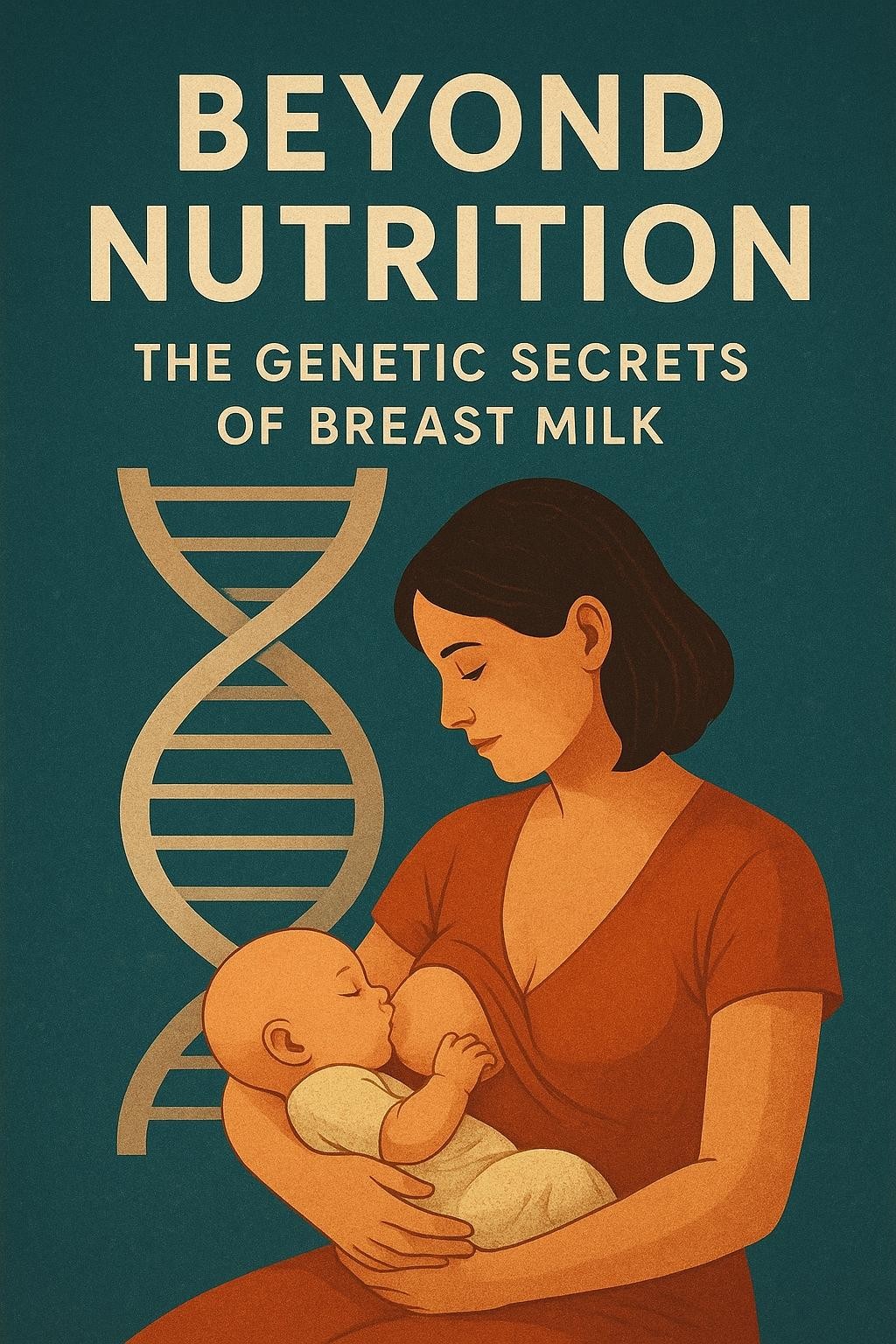 Written by Hafisat Ajibade Masud
Written by Hafisat Ajibade Masud
When most people think of breast milk, they picture the perfect natural food, packed with proteins, fats, sugars, and antibodies, all finely tuned to help a baby grow. But science is showing us something even more astonishing: breast milk isn’t just food. It’s a living communication system, carrying genetic messages from mother to child.
Welcome to the fascinating world of the genetic connections hidden inside breast milk!
Tiny Messengers with a Big Job: Exosomes
At the heart of this discovery are exosomes, tiny bubble-like packets released by cells. For years, scientists thought they were nothing more than cellular “trash bags.” Now we know better: they’re actually sophisticated delivery vehicles, carrying important biological instructions.
In breast milk, exosomes are loaded with microRNAs (miRNAs) which are small, powerful pieces of genetic material that act as master regulators of gene expression. Think of them as light switches that can dim, brighten, or completely turn on/off hundreds of genes at once.
A Mother’s Genetic Gift
When a baby drinks breast milk, these exosome “packages” do not get destroyed by stomach acid. Instead, they make their way into the bloodstream where they deliver the mother’s genetic instructions straight to the baby’s developing cells. This is like a mother whispering guidance into her baby’s biology, shaping growth and resilience in real time.
Here’s what researchers believe these genetic messages help with:
- Training the Immune System
Milk-derived miRNAs help immune cells learn what is safe and what is a threat. They calm unnecessary inflammation and promote balance which may explain why breastfed babies tend to have fewer infections, allergies, and autoimmune problems later in life.
- Supporting Organ Development
Genetic regulators also influence brain development, gut health, and metabolism, guiding the baby’s organs to grow and function properly.
- Defending Against Viruses
Some maternal miRNAs may directly interfere with viral replication, acting as an invisible shield against infections the mother has already fought off.
Milk That Adapts
Breast milk is not static! Its genetic profile changes to meet the baby’s needs. For example, colostrum, the golden first milk produced right after birth is packed with immune-related miRNAs, giving the newborn a powerful head start in fighting off germs.
As the baby grows, the milk’s miRNA content shifts, offering just the right kind of support for each stage of development.
Why This Matters
The discovery of genetic messages in breast milk opens doors far beyond nutrition:
- For Parents: It highlights breastfeeding as more than feeding, its biological tutoring that can shape lifelong health.
- For Infant Formula: Current formulas provide excellent nutrition, but they don’t yet replicate this genetic communication. Future research may one day bridge that gap.
- For Medicine: By studying which specific miRNAs are most critical, scientists may find new ways to prevent autoimmune diseases, allergies, or infections.
The Takeaway
Breast milk is more than “liquid gold.” It’s a dynamic, intelligent substance that carries a mother’s genetic wisdom to her child. Every drop is part nourishment, part instruction manual, guiding growth, immunity, and survival. It’s a hidden genetic conversation between mother and baby, reminding us that the bond of care and protection extends far beyond birth.

Interesting, it’s an amazing write up. Thanks
An amazing read, also impactful kudos